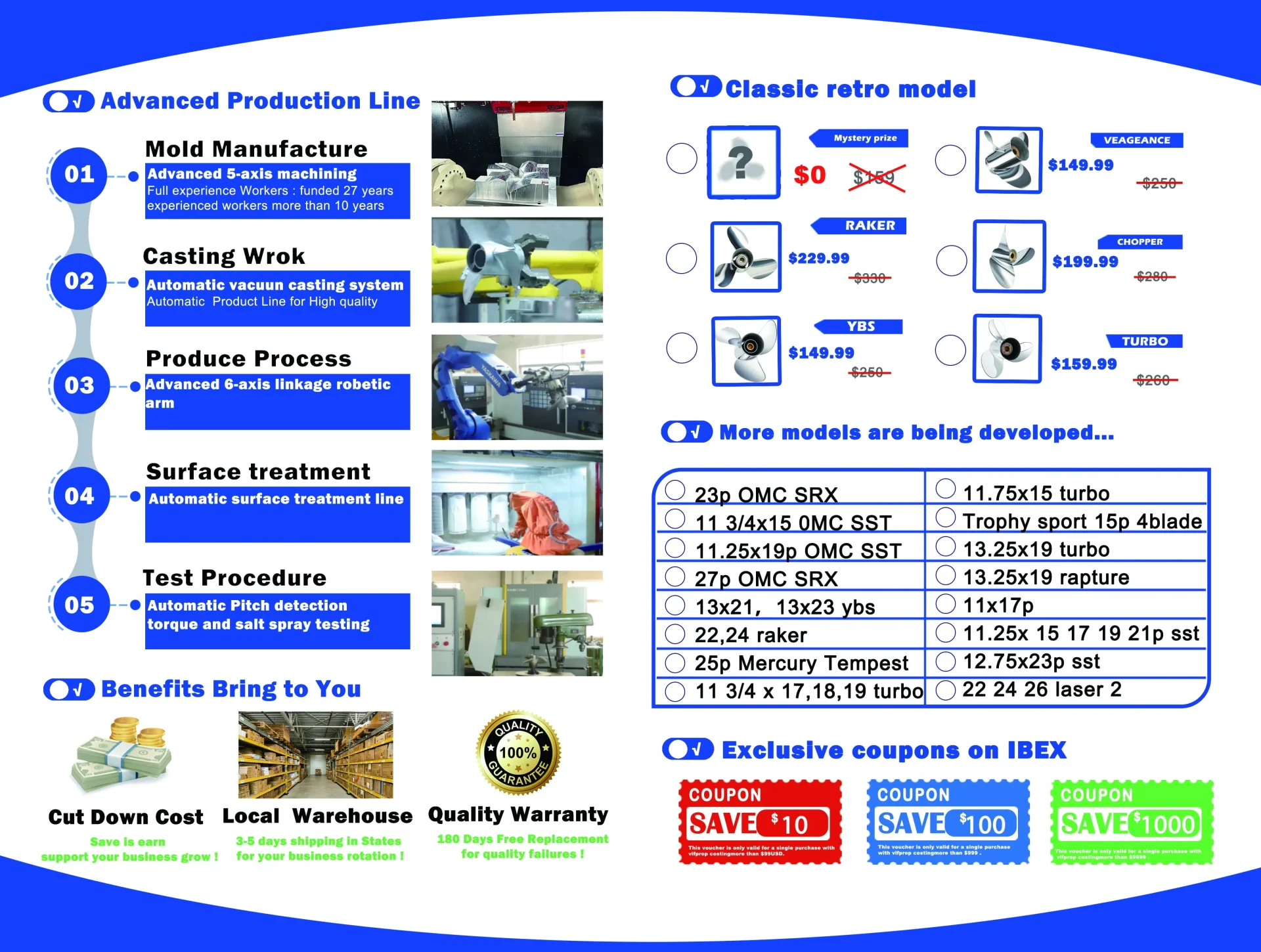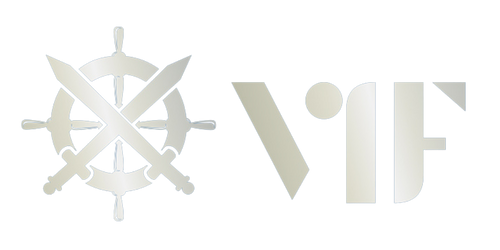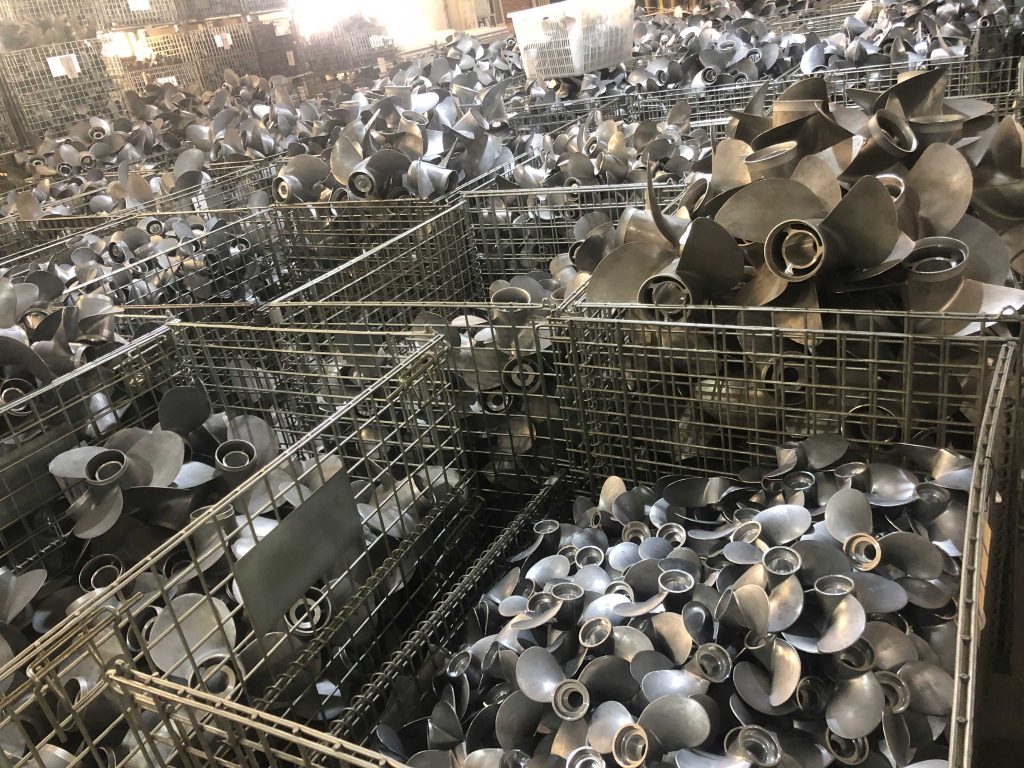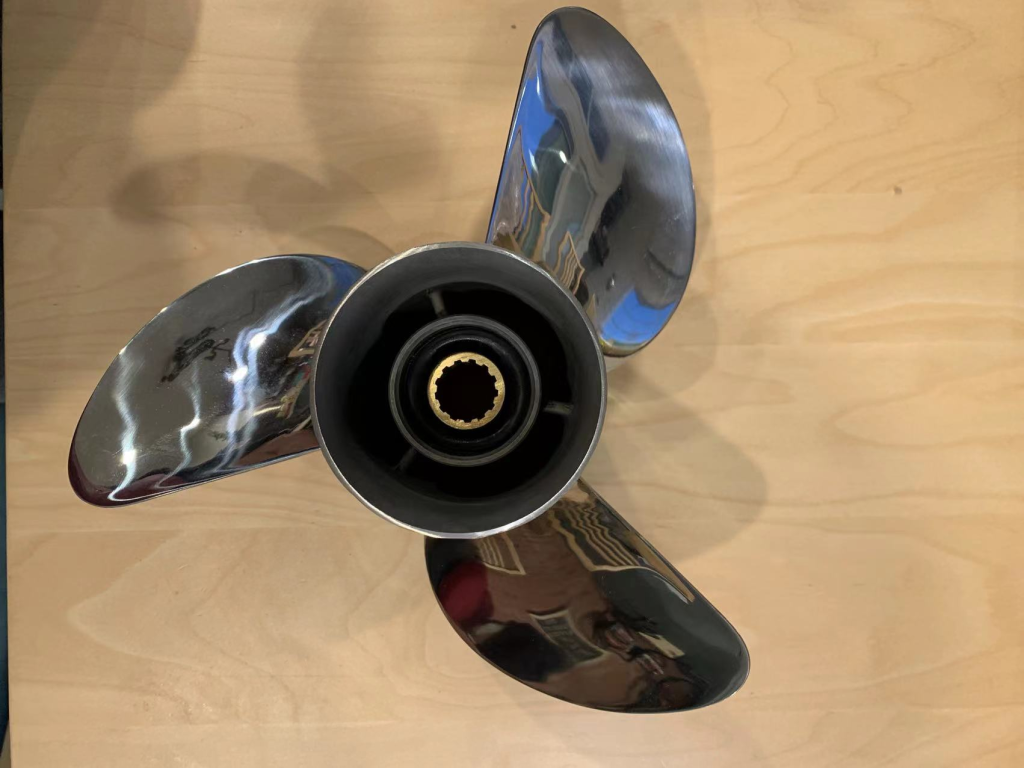
The boat propeller production process is generally divided into five main steps.
1:Draw the propeller mold drawing by the engineering of the design team, and process and manufacture the mold
2: Production of propeller blanks in the foundry
3: Machining the propeller in the machining shop
4: Surface treatment of the machined propeller
5: The propeller is tested for dynamic balance and other tests
Propeller Mold Manufacturing
All the models of “VIF” propellers are designed by our professional engineers who have been working in our company for more than 10 years, and manufactured by international advanced 5-axis machining center to produce the highest quality and precision propeller molds. This is an important first step to produce high quality propellers of “VIF” brand. With our own R&D and design team and advanced tooling production equipment, we can ensure the accuracy, development cycle and cost of our products, which is our first advantage.
Propeller Casting
A fully automated casting system (VIF-PRO-FAVCS) is used to produce high quality “VIF” propeller blanks. The strength, toughness, dimensional accuracy and productivity of the blanks are far superior to other casting methods. This allows us to combine product quality with cost control and the ability to meet your multifaceted needs, which is our second advantage.
Propeller Machining
“VIF” always believes that advanced equipment and perfect product quality management system are the important conditions for producing high quality products. Therefore, “VIF” propellers are constantly updated with the advanced manufacturing equipment in the industry. The fully automated production line consisting of 6-axis linkage articulated arm robots has greatly improved the machining accuracy and productivity, which is the third advantage we have over other propeller manufacturers.
The precise mold produces the standard propeller blank, the advanced automatic articulated arm robot line processes the propeller semi-finished products with strict tolerance and consistent dimensions, the complex and precise surface treatment process is also essential, “VIF” propeller and the famous surface treatment research VIF propellers, together with the renowned surface treatment research laboratory, have developed an automated surface treatment line for propellers (VIF-PRO-ASTPL), which gives “VIF” propellers excellent corrosion resistance and surface coating adhesion strength, which is our fourth advantage.
Propeller Inspection
The end of the production process does not mean the end of product manufacturing, high-quality products must have a strict product testing process. “VIF propellers have to go through a series of testing procedures such as dynamic balance test, CMM pitch test, torque test and salt spray test before they are delivered to customers. The strict and standardized quality inspection process is our fifth point of advantage.
Conclusion about Boat Propeller Manufacturer
VIF is a professional propeller supplier and manufacturer that realizes fully automated propeller production. This has greatly improved the accuracy of the production of propellers as well as the productivity. And we have strict quality control on our propellers. Here is a test of the toughness of our propellers.
FAQ about Boat Propeller Manufacturer
Q1: What materials are commonly used in boat propeller production?
A1: Boat propellers are typically made from materials such as stainless steel, aluminum, or composite materials.
Q2: How are boat propellers manufactured?
A2: Boat propellers are typically manufactured through processes such as casting, machining, and surface treatment.
Q3: What factors determine the size and design of a boat propeller?
A3: The size and design of a boat propeller are determined by factors such as the boat’s horsepower, weight, and desired performance characteristics.
Q4: What is the purpose of the casting process in propeller production?
A4: The casting process is used to create the initial shape of the propeller, forming a blank that will be further machined and treated.
Q5: How does machining contribute to the final shape and performance of a boat propeller?
A5: Machining involves precision cutting and shaping of the propeller blank to achieve the desired dimensions, pitch, and blade geometry.
Q6: What types of surface treatments are applied to boat propellers?
A6: Surface treatments such as polishing, painting, or applying protective coatings are used to enhance corrosion resistance, durability, and performance of boat propellers.
Q7: How are boat propellers balanced to minimize vibrations?
A7: Boat propellers undergo dynamic balancing, where weight adjustments are made to ensure even distribution and minimize vibrations during operation.
Q8: What quality control measures are implemented during boat propeller production?
A8: Quality control measures include inspections at various stages of production, such as dimensional checks, material testing, and performance testing.
Q9: How are boat propellers tested for performance and efficiency?
A9: Boat propellers are tested through methods like water tank testing or field testing to evaluate their thrust, speed, fuel efficiency, and overall performance.
Q10: Can boat propellers be customized for specific boat models or applications?
A10: Yes, boat propellers can be customized to match specific boat models, engine configurations, and desired performance requirements, offering optimized performance for different applications.


